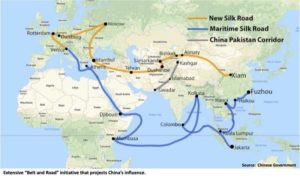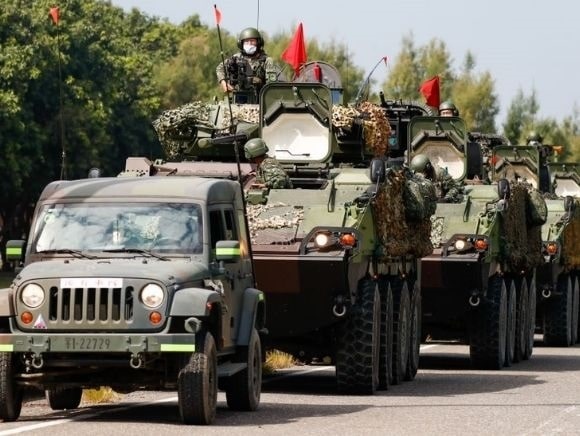Is China motivated to engage the U.S. militarily? According to statements by Beijing’s state councilor, the equivalent of the U.S. Secretary of State, it seems clear the Chinese Communist Party (CCP) is threatening the United States, its allies, and friends in the Pacific. The CCP is a dangerous global actor, defined by its motive, opportunity, and means or capability. The previous article in the series (see links below this article) described the People’s Republic of China’s current and growing military capability. But what pretext will China use to confront the United States? There are two primary thrusts to the People’s Republic of China’s (PRC) intentions. The most obvious is Beijing’s almost fanatical adherence to the notion that Taiwan must be returned to CCP control and reunited with the mainland.
 Historically, the legitimate ruler of Taiwan, formerly Formosa, has been an open question. According to a well-researched Council on Foreign Relations report, “The United States, China, and Taiwan: A Strategy to Prevent War,” written by Robert D. Blackwill and Philip Zelikow, government control of Taiwan by mainland China lasted only five years — 1945 to 1949 — hardly a long legacy of exclusive sovereign rule.
Historically, the legitimate ruler of Taiwan, formerly Formosa, has been an open question. According to a well-researched Council on Foreign Relations report, “The United States, China, and Taiwan: A Strategy to Prevent War,” written by Robert D. Blackwill and Philip Zelikow, government control of Taiwan by mainland China lasted only five years — 1945 to 1949 — hardly a long legacy of exclusive sovereign rule.
Following the takeover of mainland China by the communists in 1949, the remnant of Chinese nationalists known as the Kuomintang (KMT) led by General Chiang Kai-shek fled to Taiwan, establishing the KMT government in exile and later the Republic of China. As the BBC explained in its Chiang biography, the KMT government “continued to be recognized by many countries as the legitimate government of China, and Taiwan controlled China’s seat in the United Nations.” Since 1954 the United States has provided support to the Taipei government by treaty or formal agreement. Despite the weak historical link, Beijing is motivated to bring Taiwan officially into its orbit of tyranny. The PRC sees the United States as the single biggest impediment to that reunification.
As a recent Reuters dispatch outlined, “China claims democratically governed Taiwan as its own territory and in the past two years has stepped up military and diplomatic pressure to assert its sovereignty claim, fueling anger in Taipei and concern in Washington.” In the same article, Wang Yi, the PRC’s state councilor and foreign minister, threatened, “The United States is at risk of paying an ‘unbearable price’ due to its action over Taiwan.” Unfortunately, this level of rhetoric has become common.
The CCP’s other hegemonic push involves its “belt and road” program to encircle the globe with economic and political influence. In an article for Fox News, Bradford Betz noted, “China’s ‘Belt and Road Initiative’ (BRI) is a planned multitrillion-dollar infrastructure program that is intended to link China with more than 100 countries through railroad, shipping, and energy projects.” The Chinese government graphic highlights the extent to which the CCP intends to project its power.
Betz went on to point out, “Already China has poured massive investments into other countries as part of the initiative.” In its analysis of the success to date of the BRI, Liberty Nation explained:
“China’s encroachment into the Arctic, the South China Sea, and Africa … [is leading to] another emerging Chinese ‘beachhead’ in the U.S. Indo-Pacific Command’s backyard. Beijing plans to build a military base on Canton, belonging to the island nation of Kiribati, just 1,800 miles from the vast number of U.S. military installations on Hawaii.”
 The good news is the United States is not sitting on its hands. The Biden administration, with the cooperation of the Group of Seven economic powers, according to Andrea Shalal for Reuters, has developed a “program to counter China’s Belt and Road initiative.” Its bold objectives include spending $40 trillion by 2035 for infrastructure projects in developing nations like Senegal, Ghana, Ecuador, Panama, Columbia, and yet-to-be-identified Asian nations. Shalal explained countries like Senegal and Ghana “welcomed U.S. assurances that unlike China, the world’s largest creditor, the United States would not require non-disclosure agreements or collateral agreements that could result in later seizure of ports or airports.”
The good news is the United States is not sitting on its hands. The Biden administration, with the cooperation of the Group of Seven economic powers, according to Andrea Shalal for Reuters, has developed a “program to counter China’s Belt and Road initiative.” Its bold objectives include spending $40 trillion by 2035 for infrastructure projects in developing nations like Senegal, Ghana, Ecuador, Panama, Columbia, and yet-to-be-identified Asian nations. Shalal explained countries like Senegal and Ghana “welcomed U.S. assurances that unlike China, the world’s largest creditor, the United States would not require non-disclosure agreements or collateral agreements that could result in later seizure of ports or airports.”
China has a well-established lead with its BRI in place for more than five years, and the no-strings-attached approach taken by the United States and G7 provides the target countries with an appealing option. However, Beijing’s plan for global influence is not slowing down, and China seems to relish going nose-to-nose with the United States in this simmering geopolitical challenge. The next article in this series will assess that opportunity.
The views expressed are those of the author and not of any other affiliation.
~ Read more from Dave Patterson.
Part 1: Russia or China – Which Is the Greater Threat?
Part 2: US v China: A Menacing National Security Trend
Part 4: China Creates the Opportunity to Be a Threat Using Any Pretext




